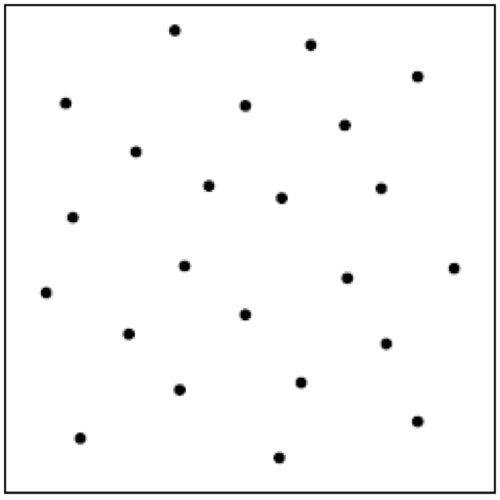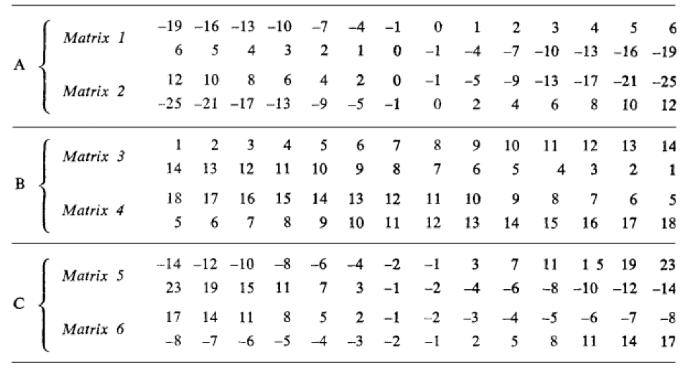Creating the Minimal Group Paradigm
Panoramica
Source: Julian Wills & Jay Van Bavel—New York University
The study of intergroup relations, such as prejudice, conflict, and discrimination, has always been a central topic in social psychology. Does discrimination stem from competition with other groups, a history of conflict, or derogatory stereotypes? Despite an abundance of real-world examples, the ingredients that lead to intergroup discrimination are often unclear.
To help solve this problem, a group of psychologists created "minimal groups" to strip away confounds like monetary self-interest and a history of conflict that are normally involved in intergroup discrimination. In minimal groups, participants are randomly assigned to completely novel groups. Thus, any consequences emerging from this minimal group induction must stem from identifying with a social group and separating the social world into "us" and "them." Research using minimal groups has shown that, despite the arbitrary nature of group membership, participants willingly discriminate by favoring members of their in-group over members of the out-group.
The minimal group paradigm is widely used in social psychology to study the most basic elements of intergroup relations. This method was first introduced in a 1971 paper called Social Categorization and Intergroup Behaviour by Henri Tajfel and colleagues.1 Across three experiments, the authors documented the in-group favoritism that emerges from a rather minimal group induction. This video will demonstrate how to produce the minimal group induction in a manner similar to the first experiment, where groups were ostensibly created based on dot estimation tendencies.
Procedura
1. Participant Recruitment
- Conduct a power analysis and recruit a sufficient number of participants.
2. Organize materials.
- Create forty images of dot clusters with various amounts (see example of one in Figure 1).
.css-f1q1l5{display:-webkit-box;display:-webkit-flex;display:-ms-flexbox;display:flex;-webkit-align-items:flex-end;-webkit-box-align:flex-end;-ms-flex-align:flex-end;align-items:flex-end;background-image:linear-gradient(180deg, rgba(255, 255, 255, 0) 0%, rgba(255, 255, 255, 0.8) 40%, rgba(255, 255, 255, 1) 100%);width:100%;height:100%;position:absolute;bottom:0px;left:0px;font-size:var(--chakra-fontSizes-lg);color:#676B82;}
Risultati
This procedure typically results in considerably higher payouts (i.e., more rewards and less penalties) for in-group members compared to out-group members. This in-group favoritism emerges regardless of the experimental condition; even when the group labels signal no objective value (i.e., "under-estimator" and "over-estimator"), this distinction is sufficient for discriminatory behavior ( Figure 4). Moreover, these differences cannot be attributed to genera
Applicazione e Riepilogo
Participants favored their own groups in the distribution of real rewards and penalties in a situation where a fairly irrelevant classification distinguished the in-group and out-group. The results support the theory that social categorization, regardless of the organizing principle, is capable of creating intentional discriminatory behavior.
People deliberately choose decisions that make their in-group "winners" even at
Riferimenti
- Tajfel, H., Billig, M. G., Bundy, R. P., & Flament, C. (1971). Social categorization and intergroup behaviour. European journal of social psychology, 1, 149-178.
- Tajfel, H. (1974). Social identity and intergroup behaviour. Social Science Information/sur les sciences sociales.
- Turner, J. C., Hogg, M. A., Oakes, P. J., Reicher, S. D., & Wetherell, M. S. (1987). Rediscovering the social group: A self-categorization theory. Basil Blackwell.
- Van Bavel, J. J., Packer, D. J., & Cunningham, W. A. (2008). The neural substrates of in-group bias a functional magnetic resonance imaging investigation. Psychological Science, 19, 1131-1139.
Vai a...
Video da questa raccolta:

Now Playing
Creating the Minimal Group Paradigm
Social Psychology
25.4K Visualizzazioni

Creating the Minimal Group Paradigm
Social Psychology
25.4K Visualizzazioni

Evaluating the Accuracy of Snap Judgments
Social Psychology
21.0K Visualizzazioni

Highlighting and Reducing the Impact of Negative Aging Stereotypes During Older Adults' Cognitive Testing
Social Psychology
7.2K Visualizzazioni


